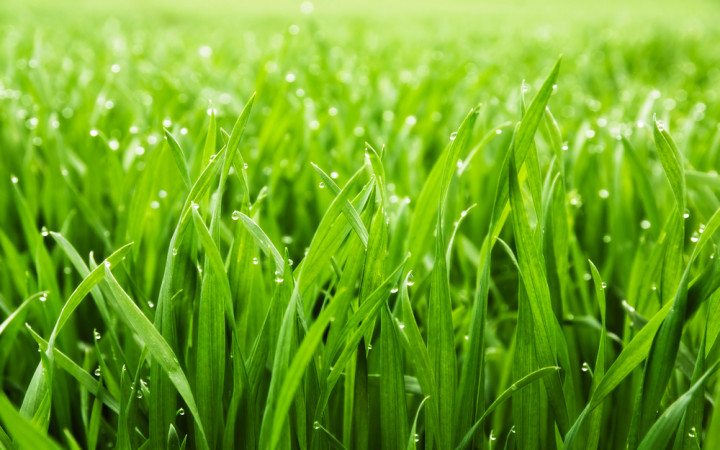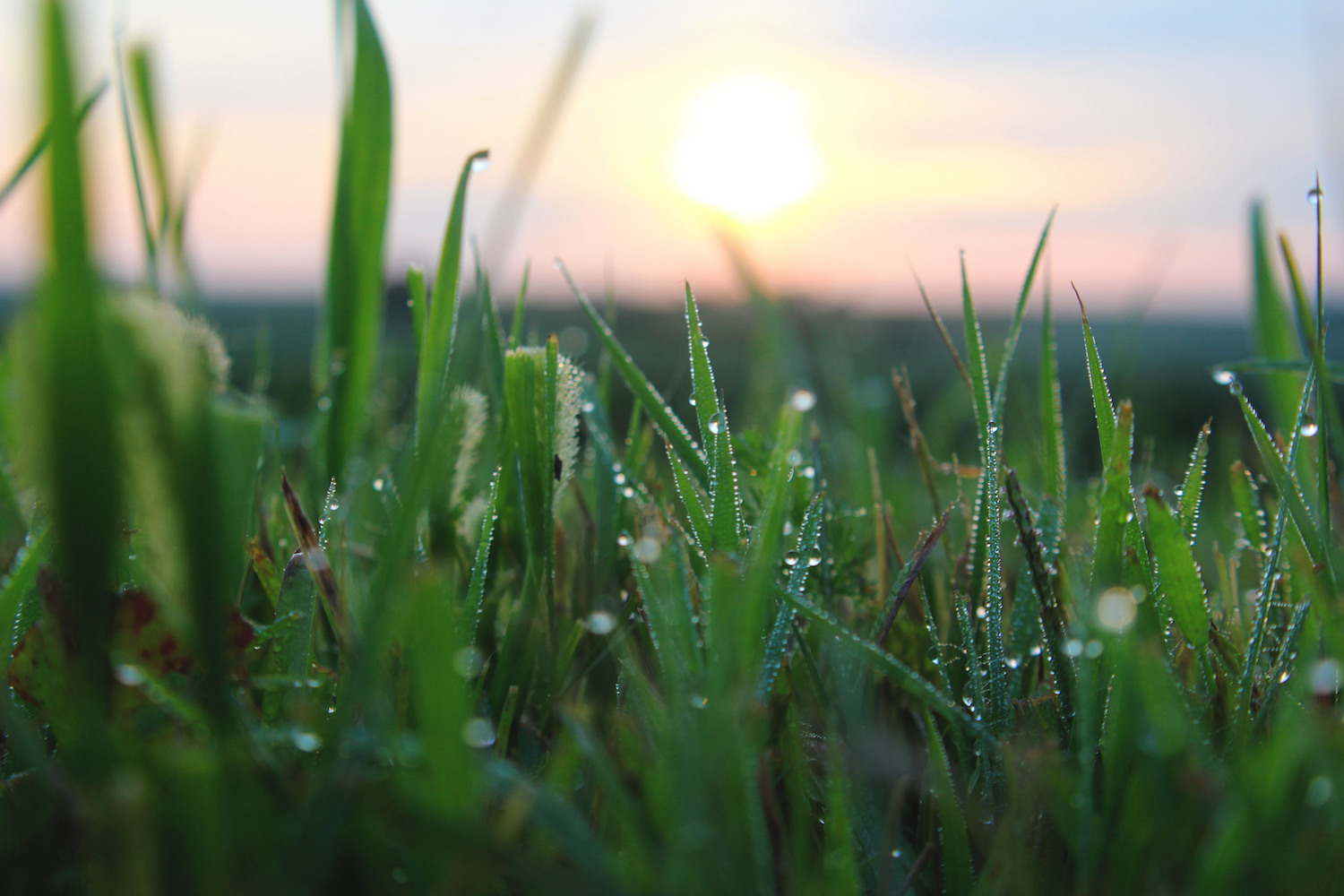
When it comes to giving plants more hydration and easing the stress that comes with drought conditions, dew can be helpful.
Plants can be given dew as a source of moisture by leaving them outside during the night and into the morning. Water vapor condenses on leaves, some of which falls to the ground and is absorbed by stomata. Larger surface area leaves will result in more dew formation and higher soil moisture levels.
Under the correct circumstances, both indoor and outdoor plants can develop dew on their leaves.
This essay will discuss the several advantages of dew, how it impacts plants, and what you can do to your lawn to maximize its advantages and encourage wholesome growth.
Table of Contents
Can Dew be Enough to Water Plants
Larger leaves can collect more dew, and the shade they cast on the ground can stop the sun from quickly evaporating the moisture.
Furthermore, there is proof to back up the idea that dew can provide plants with moisture.
Leading American geomorphologist and hydrologist LUNA B. LEOPOLD wrote in a published essay that based on his observations of the constancy of the dew in his region,
The semi-arid southwest of the United States lends support to the idea that dew occurs frequently enough to likely represent a significant source of moisture for some plants.
Should You Place Indoor plants in the Dew
Indoor plants can better absorb water through their leaves by being placed outside in the dew.
Similar to sprinkling indoor plants, the increased humidity from the dew has a more natural effect.
For this reason, a gardener at my neighborhood plant nursery once advised me to let my cactus outside in the evening to catch some beneficial dew. Nevertheless, only overnight and from early morning until 8 am.
For plants like cacti, the dew’s moisture content is sufficient. Cactus plants thrive in arid environments and get the majority of their hydration from dew deposits.
Other indoor plants operate in the same manner. We’ll go into more detail about the advantages of placing your indoor plants in the dew in the next point.
Use this reasonably priced soil moisture meter from amazon to eliminate guesswork in knowing how much moisture your soil has.
Benefits of Dew
Helps plant revive from drought
Drought is an example of an abiotic stress, meaning that it primarily affects plants’ physical rather than biological states.
Dew can provide plants with the much-needed moisture. The necessary droplets build up on the leaves and are absorbed by the plant through the stomata.
By moving water through the xylem from the leaves to the roots, this immediately increases the moisture content of the plant. It will also increase the moisture content of the soil.
Dew that has gathered on the leaf may also drip to the soil beneath the plant, adding to the moisture content of the soil.
Reduces Stress in Plants
Drought or indoor plants that haven’t received water in a while are the two main causes of water stress in plants.
Drought not only has an impact on plants’ water content, but also on stomatal closure, photosynthesis, and the flow of gases between leaves and the atmosphere.
Additionally, because the flow of water through the plant is constrained, this gaseous exchange lowers transpiration and restricts the uptake of nutrients from the roots.
Dew alleviates the aforementioned negative situations by facilitating water absorption through the leaves while the plant is under distress and the stomatal opening relaxes.
Increases Humidity and Water Absorption
Similar to sprinkling, dew directly raises the relative humidity around plants, improving their capacity to absorb moisture.
The stomata open and take in the water from the atmosphere as humidity rises because there is a greater difference in leaf water between the ambient and the plant.
Plants can also be misted instead of being submerged in dew because misting offers the same conditions as dew but for a shorter amount of time.
If you want to learn how to mist your plants properly, you can read our in-depth essay on misting here.
Amazon’s Geniani portable humidifier offers the perfect level of ambient humidity for strong plant development. Clicking here will take you there.
Provides Cooling for Plants
The temperature of the plant decreases when the dew dries up on the leaf.
As the water transforms from a liquid to a vapor, cooling takes place. The heat from the surface of the leaf is absorbed by the water molecules in order for them to accomplish this, chilling the leaf as it evaporates.
The circulation of fluids in the xylem and phloem throughout the plant causes this cooling effect to spread throughout the entire plant.
Helps Seed Germination
The atmosphere’s reaction to dew can create the perfect environment for seeds to sprout.
With the development of dew, it is simple to create cool, moist environments, and with the right air and lighting conditions, it is simple to promote seed germination.
What is Dew point?

When the temperature drops below the dew point, moisture from the air condenses onto the grass.
The temperature at which air must be chilled for it to become saturated with water vapor is known as the dew point. The water vapor in the air will condense to produce liquid water if it is cooled down much more.
Water will condense on the surface when air cools to its dew point in contact with a surface that is cooler than the air (source)
Where Does Dew Come From?
Dew is produced from the moisture that plants release during the transpiration process.
Water moves through a plant during transpiration, where it evaporates from aerial parts like leaves, stems, and flowers.
Although water is essential to plants, only a small portion of the water absorbed by the roots is utilized for growth and metabolism.
This can be used to hydrate houseplants.
Other deeply rooted plants and trees that are accustomed to the outdoors can harvest the water present deep within the soil and release it into the atmosphere through transpiration, where it can be used by other plants as dew.
When indoor plants are left outside from late at night until early in the morning, the dew that forms on the leaves and drips onto the ground below can assist hydrate the plant.
The Effects of Dew on Lawn Grass
Lawn grass will benefit in the same way that houseplants do. Dew has advantages for grass, too.
Even though water is lost through transpiration, changing some lawn-care practices, such as cutting the grass a little taller, can help to significantly increase the amount of water available to the grass.
Think about cutting the grass with long enough blades to help it retain moisture.
A higher surface area for dew to condense will be produced by grass with blades that are 3 to 4 inches longer.
Longer grass blades can also help keep soil moisture from evaporating from the sun as it moves through the day by casting shade on the soil below.
The grass may receive moisture from dew, but you should still keep an eye on its development. If it begins to show signs of dehydration, you can implement a watering schedule that involves applying water for 15 minutes by a sprinkler once or twice a week to saturate the soil and encourage the development of deep, healthy roots.
In order to maintain healthy growth, lawn grass normally needs around 1 inch of water every week.
Sprinkler watering should be done in the morning before 10 am to aid with daytime cooling and disease prevention.
Consider the path of the sun and how it is impacted by the shade of larger trees to boost the impacts of moisture within the soil of lawn grass.
Evaporation can be significantly decreased by the shadowing by lowering surface temperatures.
Even the house’s structure can only receive a half-worth day’s of sunlight when the sun moves from east to west because of the surrounding plants, grass, and lawn.
Therefore, good plant placement in relation to larger structures can aid in preventing evaporation and soil moisture loss.
Morning Sun vs Evening Sun
The sun is said to be better in the morning than in the evening. This is because the air gets drier, the temperature rises, and the humidity falls as the sun moves throughout the day from morning to evening.
Morning sun is less intense because the dew or additional moisture in the air creates a sheltering effect that lessens the full impact of the sun.
The temperature on the surface of the plants decreases as the day heats up and the dew evaporates, turning the water back into vapor.
Therefore, it can be quite beneficial to place plants and grass systems so that they receive most of their early sun in relation to larger structures.
This has an overall impact on how much water is used to water lawns throughout the sweltering summer months of the year, not to mention the cost savings that come with it.
Can Dew Provide Nutrients for Plants
According to analytical data, mist can give plants modest amounts of minerals.
These conclusions were drawn from study by the Institute of Civil Engineers and Architects, Ahmedabad, which involved the collection and analysis of a sample of dew.
| Checked For | Number Found |
|---|---|
| EC (electrical conductivity) | 0.24 dS / m |
| pH | 7.70 |
| TDS (Total Dissolved Solids) | 154 ppm |
| (Calcium and magnesium) Ca+2 + Mg+2 | 1.50 me / lit |
| Na+ (Sodium) | 1.00 me / lit |
| CO3 -2 | Trace |
| HCO3 – | 1.25 me / light |
| Cl– | 1.50 me / lit |
The climate in India, where this test was conducted, was different from the one in North America.
The kind and quantity of nutrients in dew might vary depending on the area and meteorological conditions.
As a result, the nutrient composition of dew samples will vary depending on the location.
FAQ
How long does it take morning dew to dry off the grass?
The sun is higher in the sky between the hours of 8 and 10 in the morning, allowing the grass to dry from the overnight dew. The sun won’t bake you because it’s still too early for the heat of the day.
Does dew water your lawn?
For plants, dew alleviates water stress through three basic mechanisms. Reduced transpiration (the release of water into the atmosphere through pores in plant leaves) is caused by water that has been dropped on grass and leaves. Dew creates a barrier of protection on the leaf, preventing transpiration until it evaporates.
Is it OK to cut grass with morning dew?
It is advised against trimming your grass in the morning and afternoon. Even though the temperature and humidity are normally lower at dawn, cutting wet grass too early can leave ruts, causing the grass to clump and settle, clog your mower, and harm the roots of your lawn.
Why is there water on grass in the morning?
Dew is the term for the moisture on the grass. The moisture that results from condensation is known as dew. When a substance transforms from a gas to a liquid, it goes through the process of condensation. So, the conversion of water from a vapor to a liquid causes dew.
Is morning dew good for lawns?
The seed bed is kept moist by morning dew, and evaporation is slowed down by the sun’s softer rays. It’s the ideal time to build that stunning lawn that your neighbors will enviously admire from over your fence because the soil temperatures are still warm and the rains have been cool.
